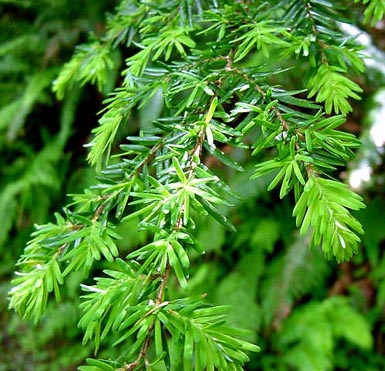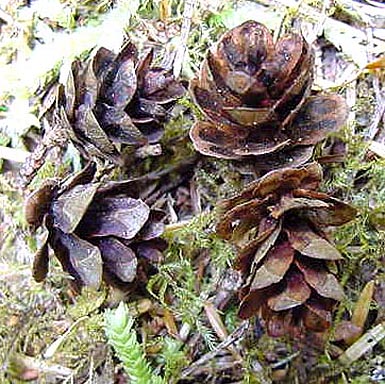Form: This is a large tree reaching heights between 125 and 175 ft. It also has a pyramidal crown with a drooping terminal leader.

Needles:
Arrangement: linear
Length: 1/4-3/4'' long
Shape: flat
Other: Tend to have two sizes that alternate along twig; yellow-green above w/ 2 white lines below

Bark: The bark is thin with flattened ridges. The inner bark has a dark red color and is streaked with purple.

Cones: The cones are 1" long, egg shaped and have imbricate scales with a reddish-brown color.

Distinguishing characteristics: This is a large tree that has distinctive cones, a linear needle arrangement, and flat shaped needles.
Range: This species occurs in the Pacific northwest between 2,000 and 6,000 ft. in elevation.
Silvics: This tree is tolerant and prefers deep, moist, porous soils, but has hardy growth in drier areas.
Ecological and cultural importance: This is the most important commercial hemlock species. It was unknown until World War I, then became readily available to the world. It is the state tree of Washington.